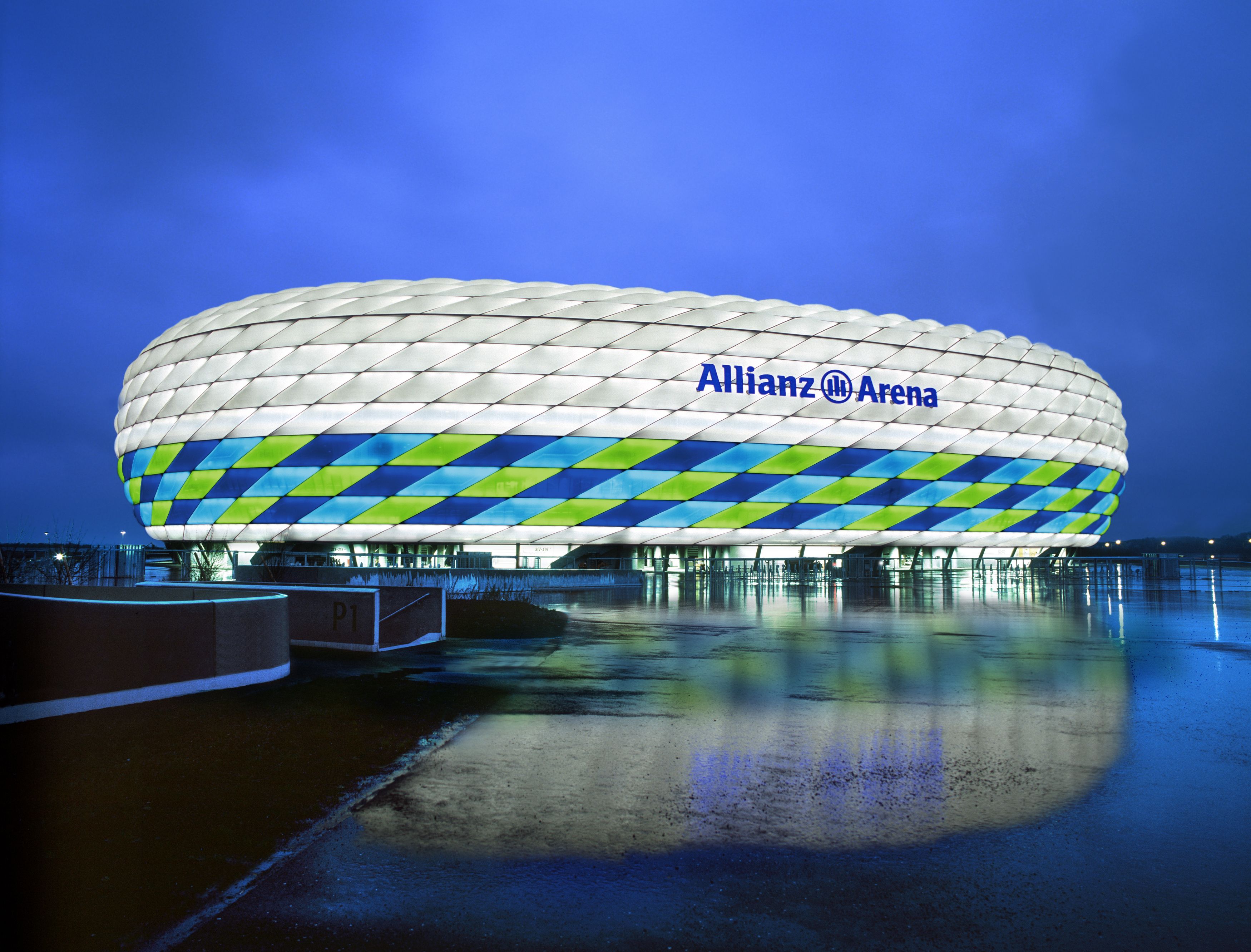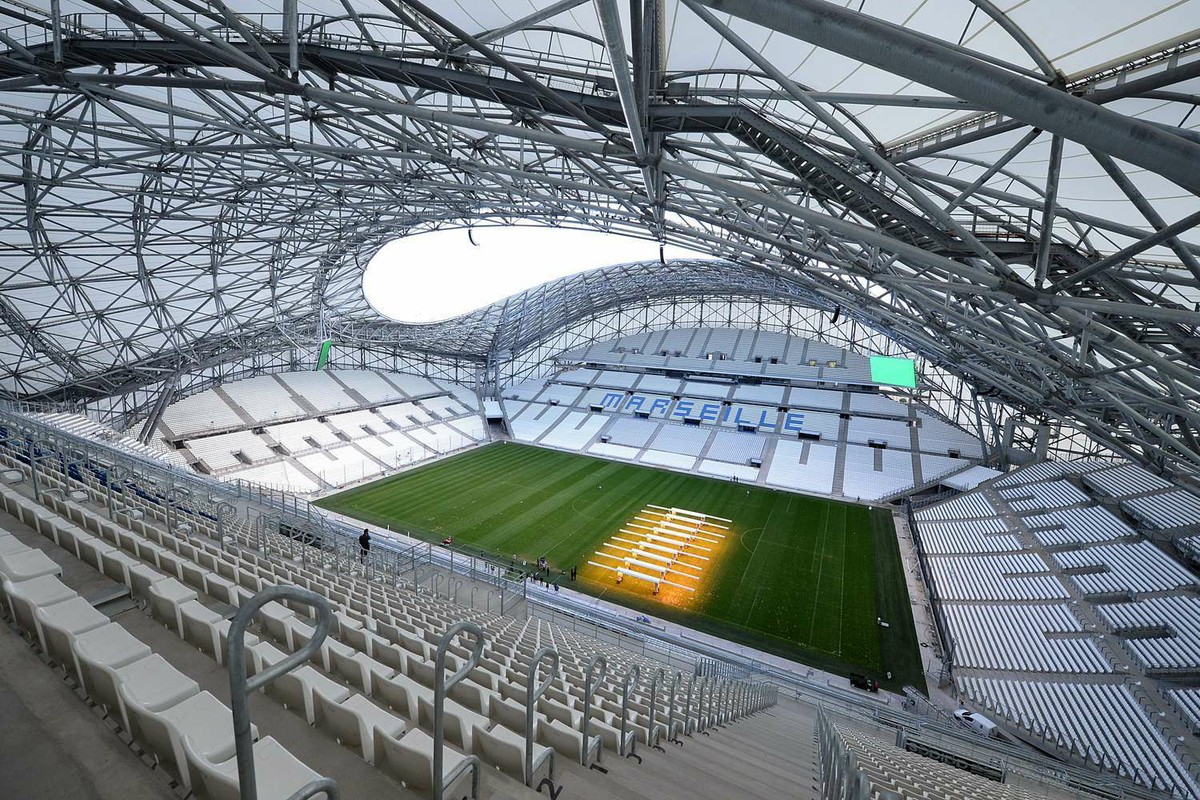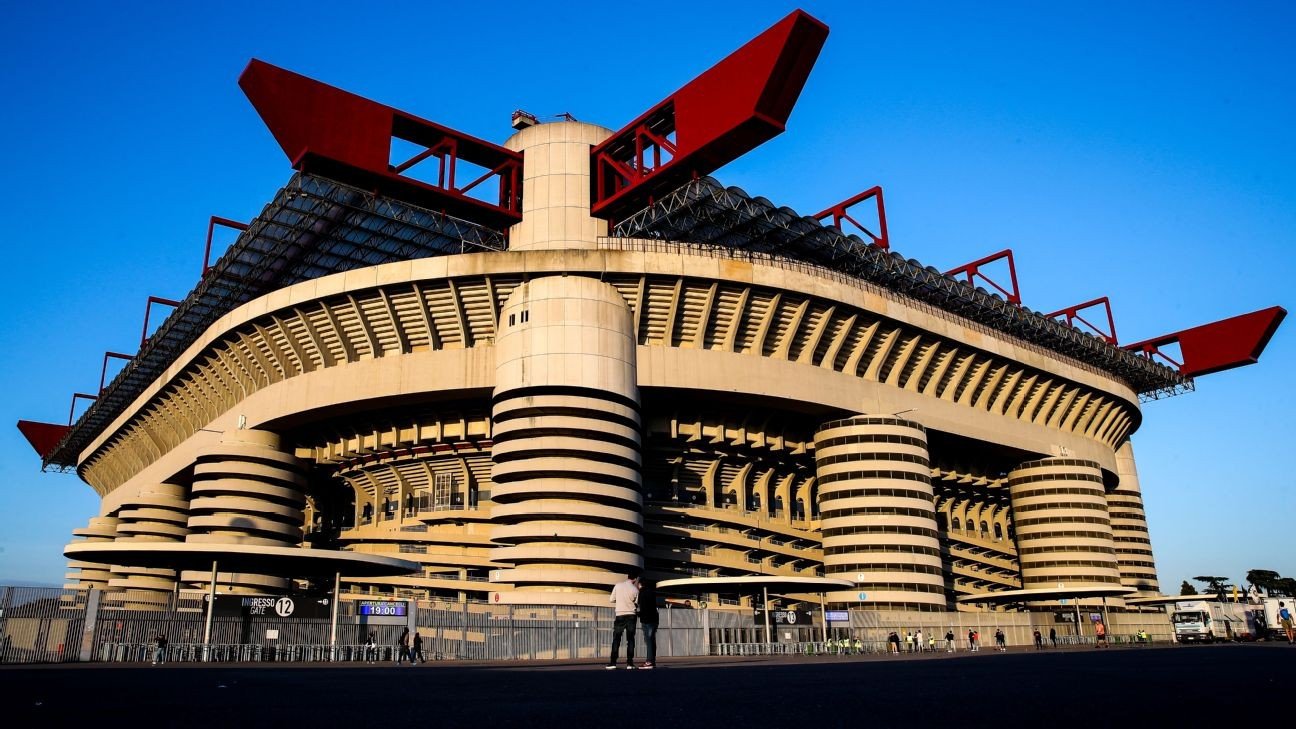1. Allianz Arena (Munich, Germany)
Opened: may 30, 2005
Capacity:71,137
Architects: Bureau Herzog & de Meuron Architekten

The Bayern Munich arena is often referred to as an “inflatable boat” or “car tire” because of its shape . Its facade and roof consist of 2,760 ethyl fluoroethylene pillows filled with dry air. Each of them can be illuminated from the inside, so that the Allianz arena takes red during Bayern’s matches, and white during the national team’s matches . This glow is so strong that it is noticeable even at a distance of 75 km.
2. Velodrome (Marseille, France)
Opened: June 13, 1937
Renovated: last time in 2014
Capacity: 67 394
Architects: SCAU Bureau

The Olympique de Marseille arena was built almost 80 years ago and is still the largest club football stadium in France. The velodrome got its name from the fact that it was intended not only for football matches, but also for Bicycle races: the tracks were preserved until the mid-1980s, when they were replaced by bleachers. The last reconstruction of the stadium was timed to coincide with the 2016 European championship and ended in 2014. Its capacity has increased to 67,394 spectators, and a roof has finally appeared over the stands — an undulating canopy of 65,000 square meters.
3. Giuseppe Meazza (San Siro), (Milan, Italy)
Opened: September 19, 1926
Reconstructed: last time in 1989
Capacity: 80,018
Architects: Ulysses Stacchini and Alberto Cugini

The legendary arena of the Italian “Milan” and ” inter “was built in 1926 and was originally named” San Siro”, after the suburb near which it was located. The stadium, where only Milan played at the time, held 35,000 spectators, and could not accommodate all comers. In the following decades, the arena has undergone several renovations, so that its capacity in different years was from 100,000 to 80,000 people. In 1979, “San Siro “was renamed” Giuseppe Meazza ” — in honor of the two-time world champion in the Italian national team. One of the last major renovations to the arena occurred in preparation for the 1990 world Cup, when additional tiers and a roof were added, located on four concrete towers.